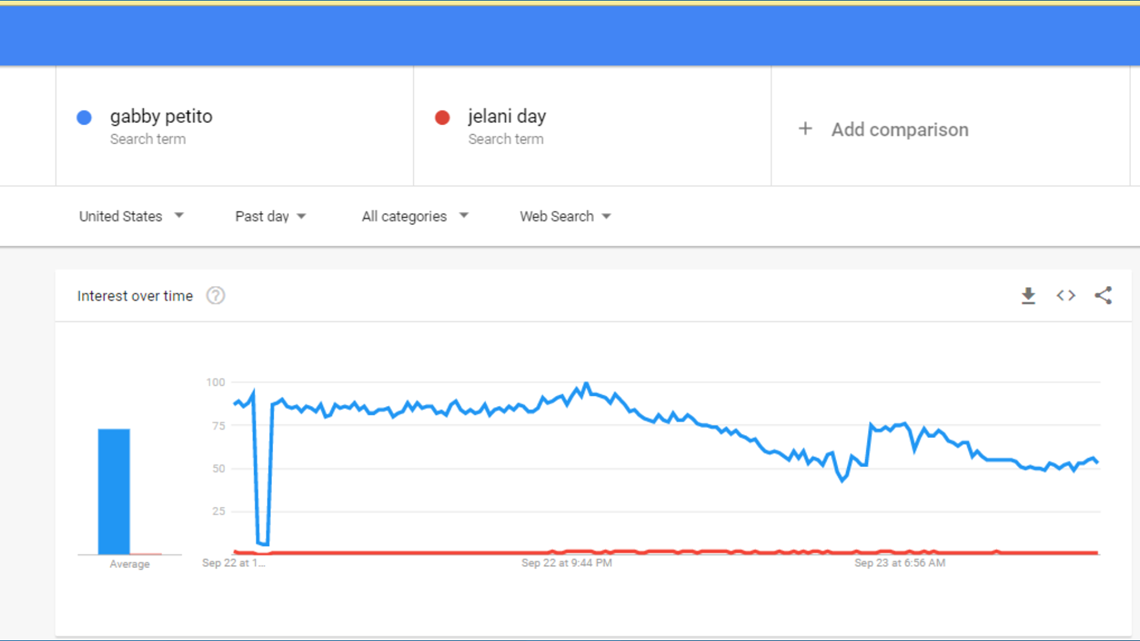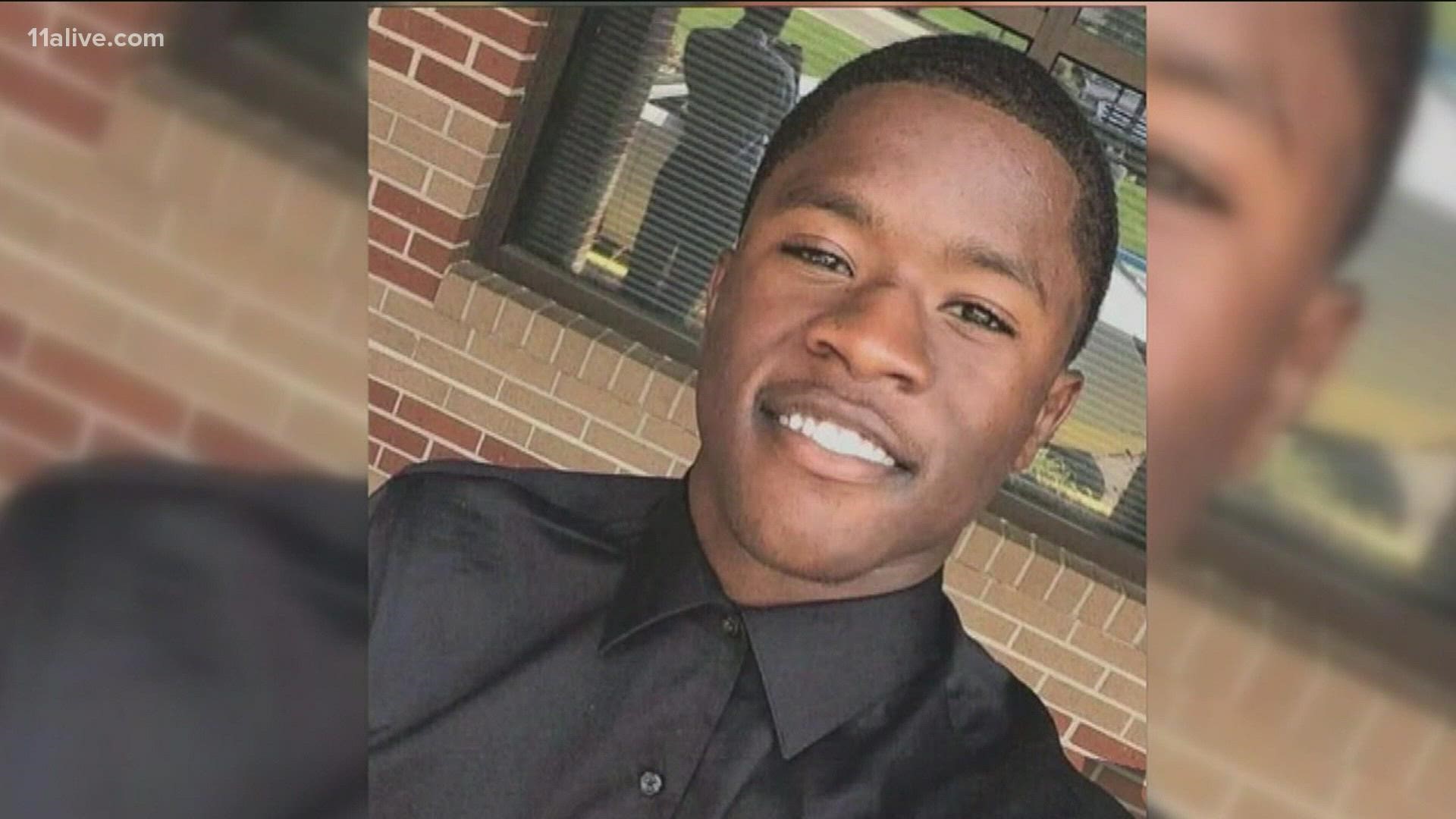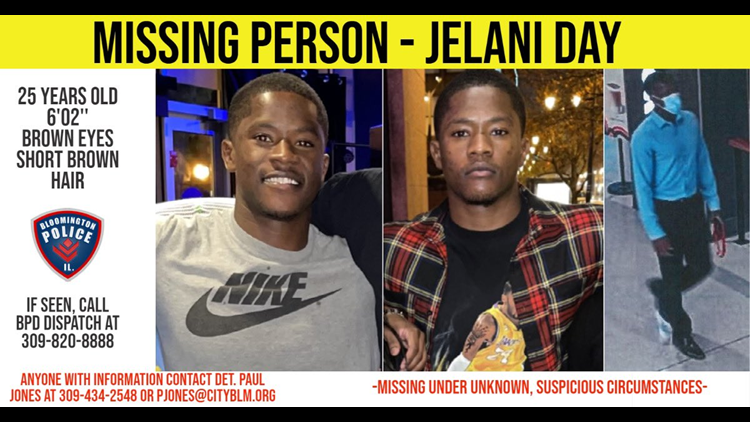ATLANTA — UPDATE: According to 11Alive's sister station WQAD, the LaSalle County Coroner's Office confirmed a body found in early September has been identified as the missing Illinois State University student Jelani Day.
DNA testing comparisons were use to identify the 25-year-old graduate student. Read more here.
Original story:
The Gabby Petito case has sparked a much-needed discussion about the disparity of coverage between missing white people and missing persons of color.
Have you heard of Jelani Day? If the answer is no, that's the point many friends, family, fraternity members and concerned ones are making across social media.
According to the Bloomington and Peru Police departments, Day was last seen on Aug. 24 at a retail store in Bloomington. On Aug. 26, authorities found his white 2010 Chrysler 300 hidden in a wooded area south of the Illinois Valley YMCA.
Day is pursuing a master's degree in speech pathology at Illinois State University and intends to become a doctor, his mother has told local media.
Multiple people, including Day's teacher who originally sounded the alarm, said it wasn't like him to miss class, an appointment with a patient, and not respond to multiple calls and texts.
Day's case has not received substantial national media coverage, and 11Alive's LaPorsche Thomas did a Google Trends comparison search, finding significantly more search attention on Petito's name.


Alongside family and friends, the effort to put the case out there has also largely fallen on the National Pan-Hellenic Council network, with Day being a member of Omega Psi Phi Fraternity, Incorporated.
Since then, multiple people have fought to bring attention to Day's case through social media. In the midst of them fighting for coverage through numerous social posts, the case of Petito - a young white woman who disappeared while documenting a cross-country road trip with her fiancé - caught a whirlwind of attention.
During an interview with NPR's WGLT.org, Carmen Bolden Day expressed feeling a "lack of enthusiasm" from authorities around her son's suspicious disappearance. She said the coverage from the Petito case is what she wished happened for every missing person. Bolden Day said she would never minimize the pain of another family, instead, she aims for her son's case to be seen with the same urgency.
“But do you not see us? Do you not see me? Do you not see my son?”
“He is loved,” Bolden Day said. “He is wanted. He is important.”
During a search, the Bloomington Police Department (BPD) said a search team found an unidentified body on Sept. 4 just off the south bank of the Illinois River -- east of the Illinois Route 251 bridge.
The LaSalle County Coroner's Office said it would take "several weeks" to identify the body due to its condition.
"We ask that people refrain from speculation as the investigation remains ongoing and could take considerable time," the BPD said in a release.
On Monday the BPD said they are using digital evidence, physical evidence, witness interviews, and more to investigate Day's case.
Jelani Day missing | Search for Illinois State student continues
What the data says:
According to the Black and Missing Foundation (which pulls information from the National Crime Information Center (NCIC) database), nearly 40% of missing persons are Black while only making up 13% of the population. The coverage of Petito has brought up a bigger discussion surrounding "missing white woman syndrome."
The phrase, often used by commentators and scholars, refers to the disproportionate amount of media coverage missing people of color receive compared to that of missing upper-middle-class white females.
According to research obtained by the foundation, three main things contribute to the lack of attention in the media.
- Minority children are often classified as a runaway, which oftentimes won't receive an Amber Alert.
- Missing minority adults are associated with criminal involvement, gangs, and drugs.
- Missing minorities may live in impoverished conditions and crime is considered a regular part of their lives, thus creating a sense of desensitization.
The Black and Missing Foundation also listed things that can be done to equal the coverage and urgency for missing people of color.
- Increase the number of diverse voices and people in the newsroom and media industry
- Balance the scales and show less of one group and more of everyone
- Be vigilant in finding missing people
- See the value in Black and Brown lives







